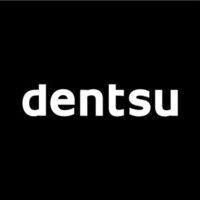
Japanese Newspaper Helps Readers Prepare for Earthquakes in This Smart Dentsu Campaign

‘Emergency Collectives’ is a new way to prepare for a disaster by itemizing emergency supplies. Having experienced the Great Hanshin-Awaji Earthquake of 1995, the Kobe Shinbun newspaper created a two-page newspaper spread, working with Dentsu, to help people prepare for such an emergency situation.
On January 17th 1995, a major earthquake struck Hyogo Prefecture in Japan, leaving 6,434 people dead, three missing and 43,792 injured. It was the Great Hanshin Earthquake, the country’s biggest earthquake disaster until the Great East Japan Earthquake of 2011.
The ‘Emergency Collectives’ campaign was initiated following another major earthquake that struck Kumamoto Prefecture last year. Kobe Shimbun, a daily newspaper in the city of Kobe, Hyogo Prefecture, compared photos of the emergency evacuation shelters in Kumamoto immediately following the earthquake with photos of such shelters in Hyogo Prefecture during the aftermath of the Great Hanshin Earthquake.
The newspaper, which itself had been damaged by that earthquake, was astonished to find that the level of suffering among evacuees had not really changed after more than 20 years.
Cooperation among residents is essential in the first 72 hours following an earthquake
For this campaign, while researching various related topics, the newspaper found that many people currently believe that emergency evacuation shelters are run by government staff. On the other hand, it learned that the time needed for government officials to arrive at the shelters tends to be at least 72 hours immediately after an earthquake.
Therefore, during those initial three days, individuals in the community must work with each other to independently manage their shelter. For that reason, Kobe Shimbun began to consider how evacuation shelters should be run in the future.
One important factor for preventing confusion in an emergency evacuation shelter is whether individuals prepare their own emergency supplies in advance and bring them to the shelter. Disorder could be alleviated if a greater number of people bring their own emergency goods.
According to a survey, however, it was found that only about 31% of people prepare such supplies in advance.
Providing a way to prepare for an earthquake by itemizing provisions
Based on its findings, the Kobe Shimbun created a campaign featuring a method for itemizing emergency goods in preparation for an earthquake. Published in its May 17 edition,
a full page of the newspaper featured a photo of an actual-size grouping of supplies that were considered as necessary by city residents. By placing matching items on top of the page, family members can discuss together what provisions should be stored in a bag to take out of the home when evacuating to an emergency shelter.
The method consists of three steps: First, the family members should place each emergency item on top of the respective image printed on the page. Second, they should talk about what other provisions should be taken when evacuating, and include them in the “Free Space” section of the page. Third, they should prepare an emergency bag to store all of the items. By itemizing the necessary supplies for the emergency bag and by having a household discussion about what items to include in the Free Space section, families are likely to greatly increase their awareness of disaster preparedness.
Various reasons for bringing emergency goods were included. Besides the ordinary usages of the emergency items assembled on the newspaper page, other functions were also considered.
Accordingly, simple explanations of the general usages of the goods as well as alternative ways of using them at an emergency evacuation shelter were written on the photograph of the items.
One family’s experience of itemizing the emergency goods is shown in a video available to the public.
Providing a new resource for disaster preparedness education going forward
The method for itemizing provisions in preparation for an earthquake did not end with the newspaper campaign. In the future, Kobe Shimbun is aiming to provide the page as a
resource for disaster preparedness education by making it available as a PDF file that can be downloaded from the internet, so that the printout can be used anywhere in communities
across the country.
An NPO involved in child support activities contacted the Kobe Shimbun, said that the campaign was really excellent, and wanted to use the newspaper page for its own activities in the future. The NPO plans to hold disaster preparedness events for children in the city of Kobe as well as in Kumamoto and Miyagi prefectures, and expressed its desire to use the page in those events. Then, without delay, it made use of the page at an event in Kobe on May 21. The NPO would also like to use it in classes at elementary schools.
This initiative can increase people’s awareness of disaster preparedness by encouraging household members to think about what they need in the event of a disaster. At the same time, it may contribute to raising the percentage of people in Japan who have prepared emergency supplies, which currently stands at only 31%. The Kobe Shimbun hope this eventually leads to better conditions at emergency evacuation shelters far into the future.














